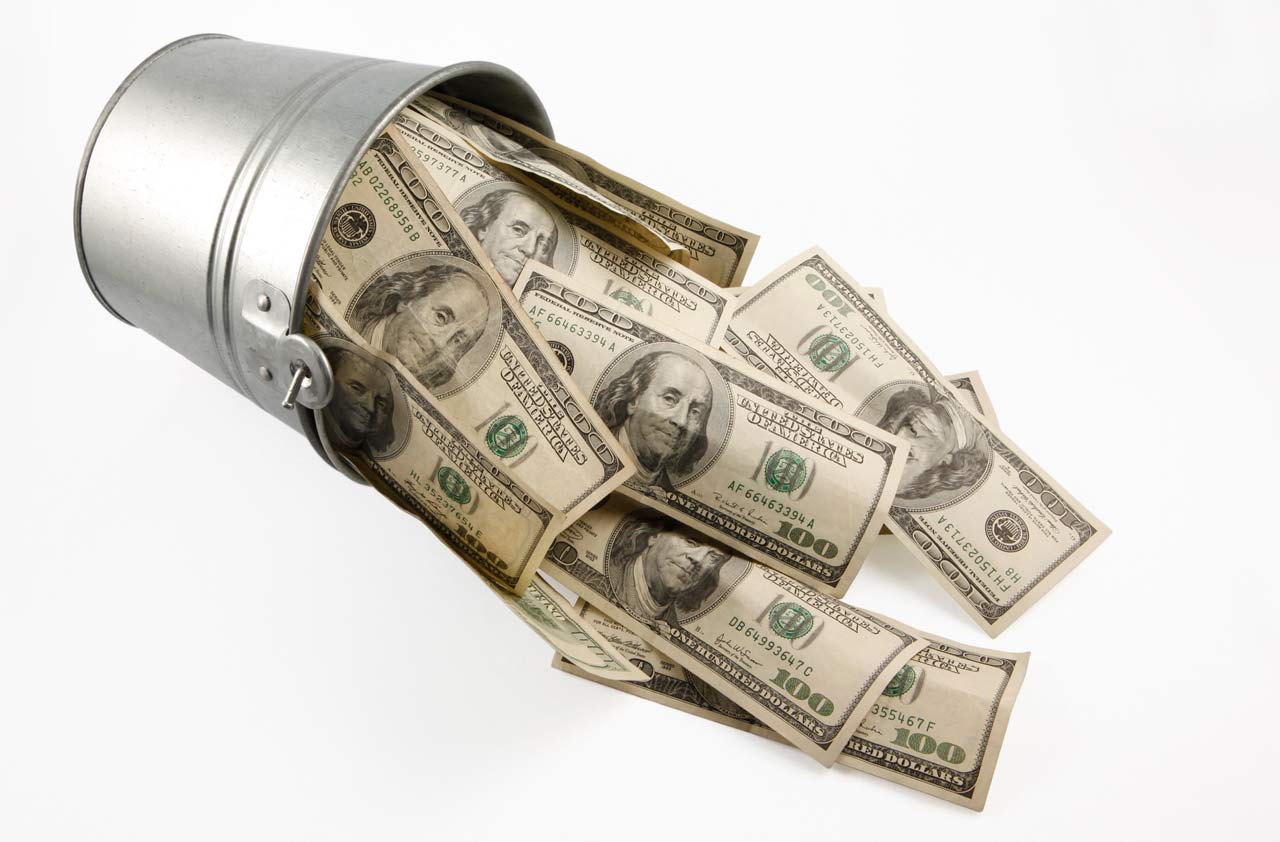The Bucket Approach for Investing in Your 50s
Pouring your savings into three different buckets is a handy way to get ready for retirement. Here's what goes into each of your buckets.


Planning for retirement is not as simple as it was for your parents. Retirement income used to be a three-legged stool: pension, Social Security income and savings. Recently, companies have been doing away with pension plans and Social Security does not cover nearly enough of an individual's retirement income needs.
Most savers are in their peak savings ability in their 50s, and it’s important time to build your buckets efficiently. To better balance your retirement savings, you should diversify your tax positioning. This can be done by contributing to three “buckets”: taxable, IRA (pre-tax) and Roth (post-tax).
The Taxable Bucket
Any money that is in your taxable bucket reaches your account after the IRS has already taken its cut. This money is like what you’d see on your paycheck after taxes have been taken out. This is the money that goes into your checking account via direct deposit on paydays. So, clearly, this bucket has no limit on what you can add to it. There are no age restrictions for adding money to this bucket, making it the most flexible of the three. Any amount of money you invest here is called your “basis” or “cost basis.” Examples of investments for your taxable bucket include CDs, savings accounts, stocks and mutual funds.
From just $107.88 $24.99 for Kiplinger Personal Finance
Become a smarter, better informed investor. Subscribe from just $107.88 $24.99, plus get up to 4 Special Issues

Sign up for Kiplinger’s Free Newsletters
Profit and prosper with the best of expert advice on investing, taxes, retirement, personal finance and more - straight to your e-mail.
Profit and prosper with the best of expert advice - straight to your e-mail.
IRA (Pre-Tax) Bucket
The second bucket is the Individual Retirement Account, aka IRA. This money can be from a traditional IRA or from funds rolled over from other retirement accounts, such as 401(k)s from former employers. All the money in this bucket is typically contributed on a pre-tax basis, meaning you earned the money and it was invested before taxes were taken from it. Therefore, you will have to pay taxes on it upon taking any distributions.
The limitations on adding money to this bucket change annually. If you want to add money and deduct the investment from your taxable income, your income must be below a certain threshold. The bulk of this money is built from contributing to a retirement plan through your employer in the form of a 401(k), 403(b) or TSP savings plans. As you hit your 50s and approach retirement, you are allowed to add more to your retirement account, known as a “catch up” period.
Typically, people have the majority, if not all, of their retirement savings in this bucket by the time they are in their 50s. The money you take out of this bucket, come retirement, is fully taxable at ordinary income rates.
The Roth IRA Bucket
The third, final and most complex of the three is the Roth IRA bucket. A Roth IRA is a special retirement account that you fund with any earned income you have remaining post-tax. Contributions to this account cannot be deducted on your income taxes. But unlike traditional IRAs, all withdrawals from this bucket — including any investment gains — during retirement will be tax free if you follow the IRS rules.
Another option for high-income earners who aren’t allowed to contribute to a Roth IRA is a Roth 401(k). Not all employers offer Roth 401(k)s, but they are becoming increasingly popular since they do away with income phase-outs for contributions.
This bucket is the hardest to build up due to income restrictions or employer availability. There are backdoor ways for such people to contribute. The availability and income restrictions typically cause this to be the smallest of the three buckets.
Which Bucket is Best?
The best bucket will depend on your specific financial situation. The pre-tax IRA bucket tends to look the most appealing. You save on taxes when you are working during your higher income tax years and spend when you are in a lower tax bracket during retirement. Although, what if you are not in a lower tax bracket during retirement? Tax rates change all the time and it’s not a given that your bracket will be lower in the future.
The Roth and taxable buckets are good because you can take money out tax free (with a Roth) or taxed less (taxable bucket), at capital gains rates with the sale of stocks or mutual funds. This assumes that the IRS doesn’t change its rules, which it has been known to do. Life is full of unknowns, and it’s important to remember that the saving rules for retirement are fluid.
The answer is the best bucket for taking income in retirement will likely change over time. As tax rules change, and your personal situation evolves, the best bucket for distributions will change, too.
Retirement savers put much time and effort into diversifying investments within their savings, so that they are not putting all their eggs in one basket. They own a mix of stocks, bonds, mutual funds and so on. Shouldn’t these investors also consider putting their different eggs in different tax baskets (buckets) as well? Not just in the IRA/401(k)/403b savings vehicles?
Retirement planning is always changing, so it’s important to stay on top of new saving mechanisms that can make the transition the best for you and your finances. Saving for your retirement isn’t easy but with careful planning, it can be accomplished and reduce your worries and stress at a time when you should be comfortably relaxing after decades of hard work.
Securities offered through LPL Financial, Member FINRA/SIPC. Investment advice offered through SFG Wealth Management, a registered investment adviser. SFG Wealth Management and Synergy Financial Group are separate entities from LPL Financial.
The opinions voiced in this material are for general information only and are not intended to provide specific advice or recommendations for any individual. This information is not intended to be a substitute for specific individualized tax advice. We suggest that you discuss your specific tax issues with a qualified tax adviser.
The Roth IRA offers tax deferral on any earnings in the account. Withdrawals from the account may be tax free, as long as they are considered qualified. Limitations and restrictions may apply. Withdrawals prior to age 59½ or prior to the account being opened for five years, may result in a 10% IRS penalty tax. Future tax laws can change at any time and may impact the benefits of Roth IRAs. Their tax treatment may change.
Profit and prosper with the best of Kiplinger's advice on investing, taxes, retirement, personal finance and much more. Delivered daily. Enter your email in the box and click Sign Me Up.

Joseph C. Conroy is a CERTIFIED FINANCIAL PLANNER™ professional who is passionate about helping his clients pursue their goals. He founded Harford Retirement Planners to provide objective advice and knowledge to his clients. By partnering with an independent broker dealer, it allows Joe to sit on the same side of the table as his clients. It is this experience, working with many individuals over the years from many backgrounds, which inspired Joe to write the book "Decades & Decisions."
-
 Crypto Trends to Watch in 2026
Crypto Trends to Watch in 2026Cryptocurrency is still less than 20 years old, but it remains a fast-moving (and also maturing) market. Here are the crypto trends to watch for in 2026.
-
 Original Medicare vs Medicare Advantage Quiz: Which is Right for You?
Original Medicare vs Medicare Advantage Quiz: Which is Right for You?Quiz Take this quick quiz to discover your "Medicare Personality Type" and learn whether you are a Traditionalist, or a Bundler.
-
 Ask the Editor: Capital Gains and Tax Planning
Ask the Editor: Capital Gains and Tax PlanningAsk the Editor In this week's Ask the Editor Q&A, Joy Taylor answers questions on capital gains tax rates and end-of-year tax planning
-
 Time Is Running Out to Make the Best Moves to Save on Your 2025 Taxes
Time Is Running Out to Make the Best Moves to Save on Your 2025 TaxesDon't wait until January — investors, including those with a high net worth, can snag big tax savings for 2025 (and 2026) with these strategies.
-
 I'm an Insurance Pro: If You Do One Boring Task Before the End of the Year, Make It This One (It Could Save You Thousands)
I'm an Insurance Pro: If You Do One Boring Task Before the End of the Year, Make It This One (It Could Save You Thousands)Who wants to check insurance policies when there's fun to be had? Still, making sure everything is up to date (coverage and deductibles) can save you a ton.
-
 4 Smart Ways Retirees Can Give More to Charity, From a Financial Adviser
4 Smart Ways Retirees Can Give More to Charity, From a Financial AdviserFor retirees, tax efficiency and charitable giving should go hand in hand. After all, why not maximize your gifts and minimize the amount that goes to the IRS?
-
 3 Year-End Tax Strategies for Retirees With $2 Million to $10 Million
3 Year-End Tax Strategies for Retirees With $2 Million to $10 MillionTo avoid the OBBB messing up your whole tax strategy, get your Roth conversions and charitable bunching done by year's end.
-
 'Politics' Is a Dirty Word for Some Financial Advisers: 3 Reasons This Financial Planner Vehemently Disagrees
'Politics' Is a Dirty Word for Some Financial Advisers: 3 Reasons This Financial Planner Vehemently DisagreesYour financial plan should be aligned with your values and your politics. If your adviser refuses to talk about them, it's time to go elsewhere.
-
 For a Move Abroad, Choosing a Fiduciary Financial Planner Who Sees Both Sides of the Border Is Critical
For a Move Abroad, Choosing a Fiduciary Financial Planner Who Sees Both Sides of the Border Is CriticalWorking with a cross-border financial planner is essential to integrate tax, estate and visa considerations and avoid costly, unexpected liabilities.
-
 I'm a Financial Adviser: This Tax Trap Costs High Earners Thousands Each Year
I'm a Financial Adviser: This Tax Trap Costs High Earners Thousands Each YearMutual funds in taxable accounts can quietly erode your returns. More efficient tools, such as ETFs and direct indexing, can help improve after-tax returns.
-
 A Financial Adviser's Guide to Divorce Finalization: Tying Up the Loose Ends
A Financial Adviser's Guide to Divorce Finalization: Tying Up the Loose EndsAfter signing the divorce agreement, you'll need to tackle the administrative work that will allow you to start over.